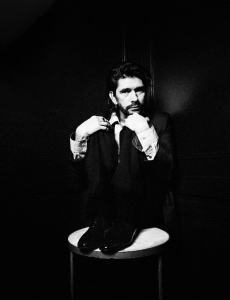- Stephen Bayley, Francesca Molteni and Letizia Ponti explain why Gio Ponti will be remembered as one of the great Italian Maestros
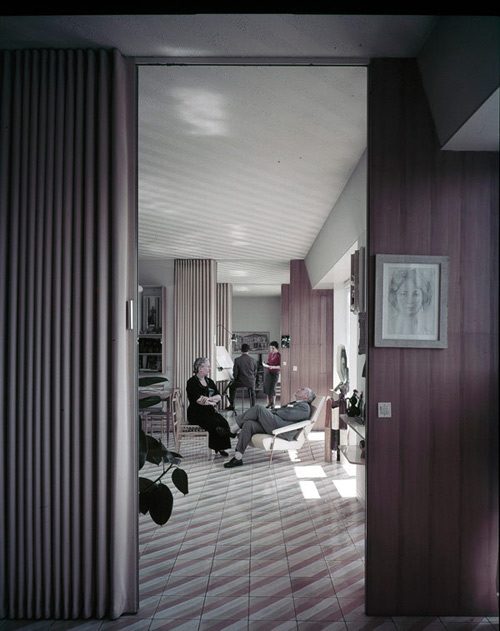
It’s impossible to separate Italian tradition from its strong relationship with “la famiglia”. Sometimes a heavy and
cumbersome presence, the family is also the hub of creativity,
passion and collaboration.Italian designer and master architect Gio Ponti’s career is the
perfect example of this. It’s impossible to talk about Ponti and
his creativity without touching on his family. And no one could
be more appropriate than Molteni, another historical
entrepreneurial family in the Italian design world, to understand
and “feel” the work of Ponti.To mark the opening of the Ponti exhibition Vivere alla Ponti and
the remake of an original Ponti collection of furniture by Molteni,
we took the opportunity to talk about the maestro with Stephen Bayley, Francesca Molteni and Ponti’s daughter Letizia.
.Words Eleonora
Usseglio-Prinsi.
.Left: Casa Via Dezza, Gio Ponti & family. Courtesy of Gio Ponti Archives
- Eleonora Usseglio-Prinsi: What does Gio Ponti represent in the fields of architecture and design?
Stephen Bayley: I am infatuated by Italy and all things Italian, like many English people generally. Gio Ponti is the absolutely summary [of that].
I like the city of Milan; it is a big fusion of design and life that is what Gio Ponti means to me. I don’t like the idea that design is something just for a small minority of people — that’s what I hate about the design world.
Gio Ponti was as Italy, where art and life are inseparable. He is the best example in that he was everything; he was a continuum. He wasn’t just an architect; he was an educator, teacher, polemicist, designer, writer, and pamphleteer… Everything that I love! I don’t know if he was a good cook, but suspect that he probably was! Everything that I love about existence is represented in what Gio Ponti did.
Eleonora: Do you think that we can still find this spirit in contemporary design?
Stephen: No! That is why it’s interesting. It is elegiac; it is a moment from the past. Our world is now unhealthily fragmented. I say that with a total respect. Ponti is history. I love history; we will never see something like this again. His world was much simpler.
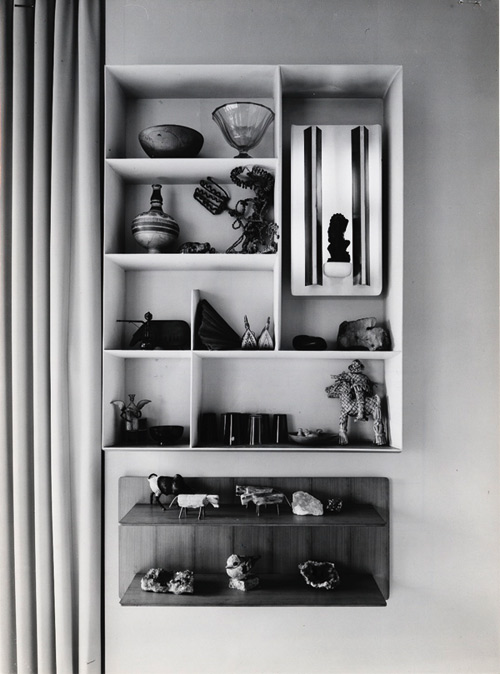 Above: Casa via Dezza library, courtesy of Gio Ponti Archives
Above: Casa via Dezza library, courtesy of Gio Ponti Archives
- Eleonora: What can he still teach us about design and architecture?
Stephen: He was aware of the past, interested in the past, but he wasn’t slave to it. He aware of tradition, he knew about history [in order] not to repeat it. He was always experimenting with materials and techniques. But he had a belief […].
The poem of W.H. Auden Goodbye to the Mezzogiorno tells you everything about English men: we are from the cold grey north, we just long to live in Italy where the food is better, the sun shines, the woman are more glamorous. That is what for me Ponti represents: pleasure. He is the Dolce Vita of design.
Above left: Gio Ponti. Courtesy of Gio Ponti Archives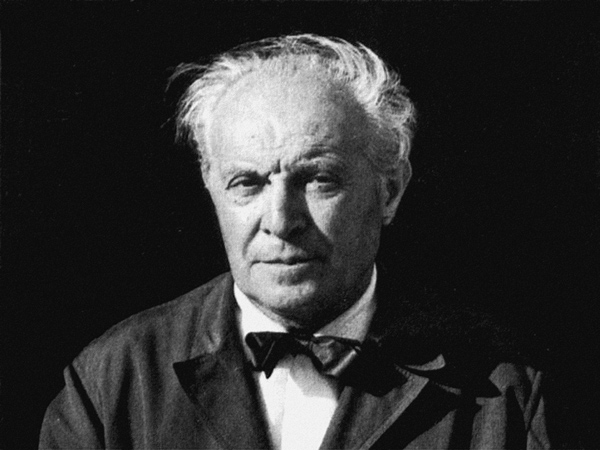 “Out of the gothic North, the pallid children / Of a potato beer-or-whisky / Guilt culture, we behave like our fathers and come / Southward into a sunburnt otherwhere”
“Out of the gothic North, the pallid children / Of a potato beer-or-whisky / Guilt culture, we behave like our fathers and come / Southward into a sunburnt otherwhere”
— W.H.Auden

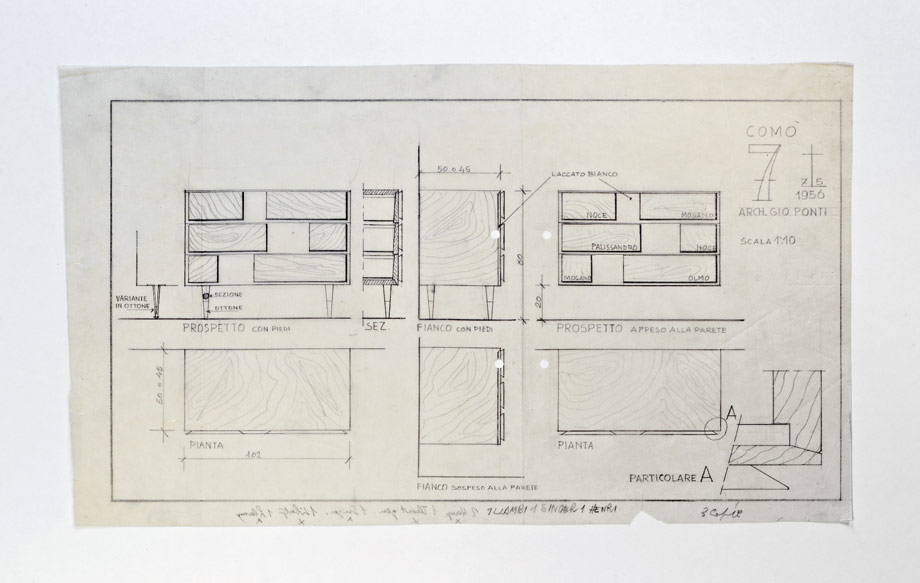 Above: Gio Ponti’s sketches for the Cassettone series drawer cabinet, 1956. Courtesy of Gio Ponti Archives
Above: Gio Ponti’s sketches for the Cassettone series drawer cabinet, 1956. Courtesy of Gio Ponti Archives
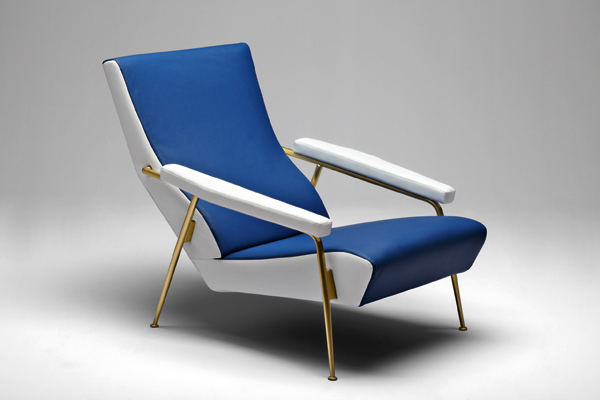 Molteni’s classic blue and white Ponti leather armchair D.153.1, with satin brass legs. Courtesy of Molteni
Molteni’s classic blue and white Ponti leather armchair D.153.1, with satin brass legs. Courtesy of MolteniEleonora: What does Gio Ponti represent in the fields of architecture and design?
Francesca Molteni: He is a genius. He is an Italian master, as Michelangelo, Leonardo Da Vinci . He is still very close [to the present], but I am sure that he will be recognised one of the leaders of the Italian artistic and architectural world [of all time].
Eleonora: What was the process like behind this collection?
Francesca: The process was really long: it took almost two years from beginning [to end]. We’d just started to work on the archives, and we found the materials, drawings and letters to accompany the prototypes. We were not really pleased with the first one(s) [we made] and we decide to go on until we found the best that looked [in keeping with] the ones designed in the 50s. Now we are really happy with this collection. It took such a long time, work [to achieve it].

- Eleonora: How is Gio Ponti still relevant to a modern consumer?
Francesca: Gio Ponti fantastic optimism; he had a way of looking at life as something happy, something to live until the end, something really precious.
His way of interpreting the house, the office, (all the places where we spend our time), it’s still very impressed to the clients, to the people today. This way to be happy, like a sunny day.
.
.
.
.
.Right: Gio Ponti’s original sketches for the Tavolino Series, 1954-55. Courtesy of Gio Ponti Archives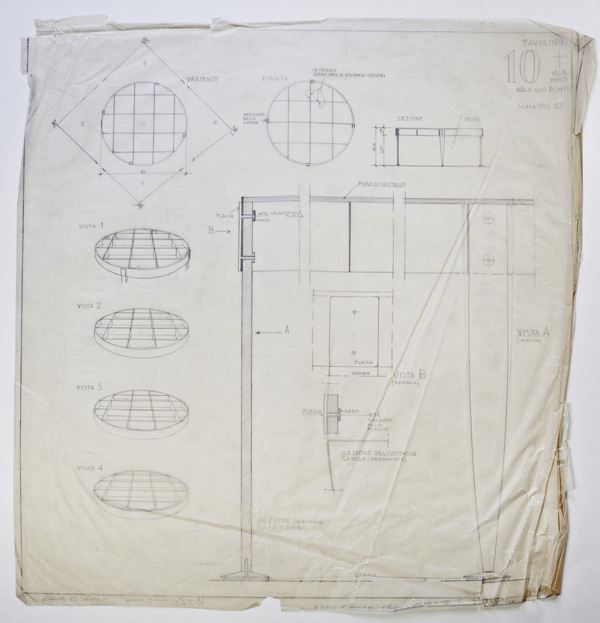

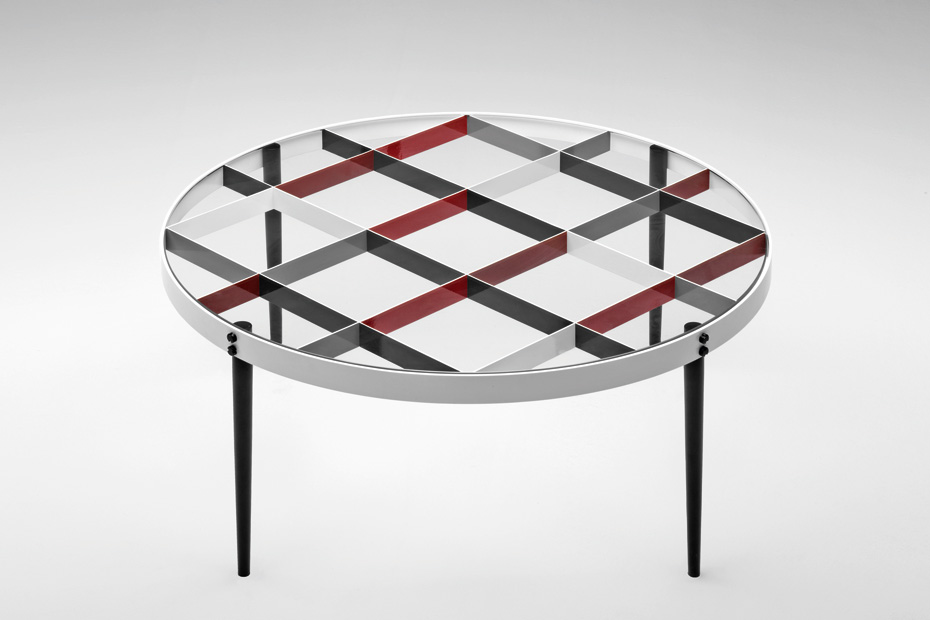 Above: the Tavolino (Tea Table)
Above: the Tavolino (Tea Table)
table by Molteni, designed from
the 1954-55 original
by Gio Ponti
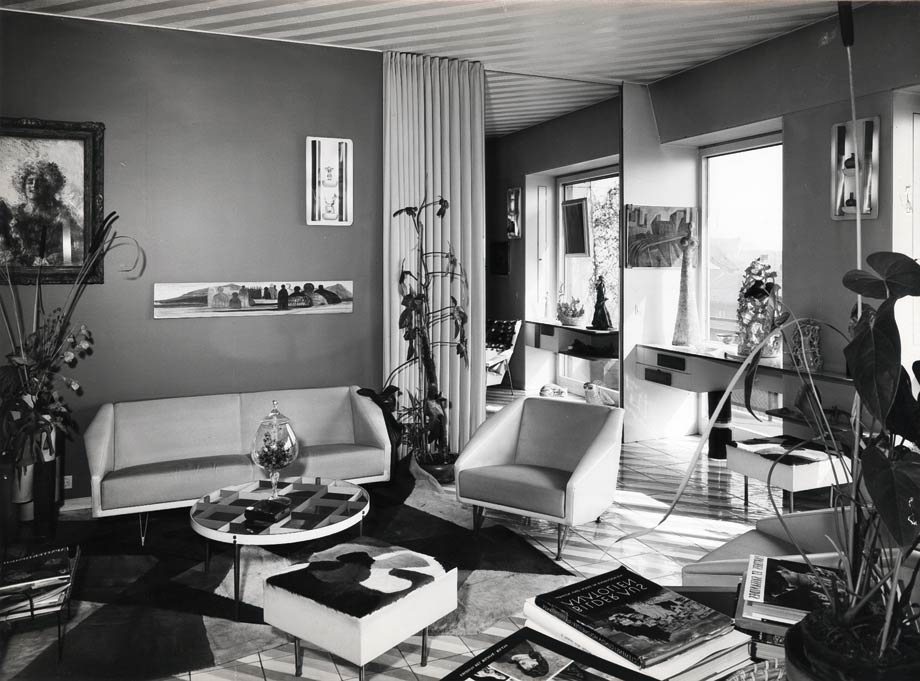
Eleonora: What does “Vivere alla Ponti” mean to you?Letizia Ponti: Especially in the apartment Via Dezza, it meant living in a unique atmosphere where everything that was done was shared. We couldn’t argue because the sound bounced the apartment. There feeling of space, of sunshine. The colours were bright, cheerful, polished and beautiful in a way.
obviously privacy didn’t exist! We couldn’t argue too much, because my father was a personality too big to . Also I was a woman and at that time was different… Later, I met feminism and I said “ciao”! I complained to my father and he sliding wall, to be more isolated. Then when he fell in love for Melotti and we had tiled floors, which are terrific from an acoustic point of view. My mum and dad were really noisy arguing, living… they were particularly vivacious.
The Via Dezza house was built, then my two older sisters, Lisa and Giovanna got married and left home, so it was my brother Giulio and me, my parents and our housekeeper (who we loved so much) at home.
It also created solidarity, a kind of community that was also experimental (a little bit like the ‘Israel’ of community living).
Above top: Casa via Dezza living room. Courtesy of Gio Ponti ArchivesEleonora: What was it like growing up in an environment filled with artists, architects and designers?
Letizia: It was fascinating, but at the same time absolutely normal. I was born . It was normal that there were people like Munari and Campigli, artists and painters [in our home].
The passions of my father were so various; at some point he fell in love with ceramics, and at the same time he met important personalities as Melotti, Manzuppi, and Lucio Fontana. In Milan, many things were happening at that time, so for us was absolutely normal.
Eleonora: You were in charge of the communication department of your father’s office: what was the perception from abroad about what was happening in Italy at that time?
Letizia: There was the feeling the something important was happening in the years after the war. Due to the work of my father, we were looking towards Europe, and everybody was curious about the United States.
A commercial collaboration [at this time] with M. Singers & Son also became a friendship. Singers wrote to my dad, then came to meet him [in Milan] — he was completely absorbed from the familiar environment.

- fell in love with Italy, and us with him. The humanity that characterised the collaborations my father had with other people really was the key to their success.
My father wrote a book that became an exhibition in Boston, James Plaut later wrote the introduction for the book. We arranged to meet with him, our surprise) he was really there on time. My dad said, “these Americans are too precise”!
Behind every relationship he had, there was always this kind of mutual love, and friendship, that always had positive implications.
Right: Montecatini office courtesy of Gio Ponti ArchiveMore on the Gio Ponti Molteni collaboration can be found at Molteni.it
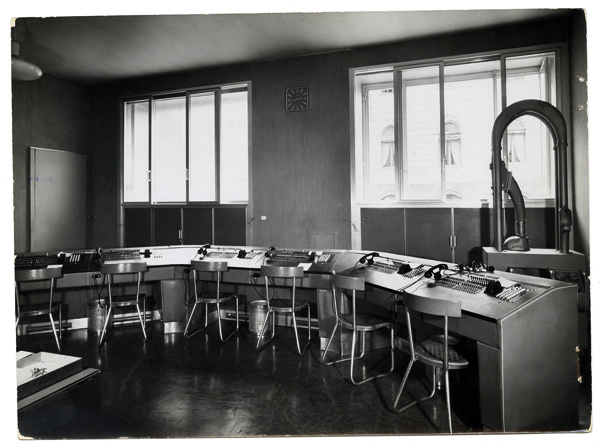
Subscribe to Port Magazine annually and receive each issue to your door.
Get PORT in print
